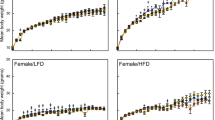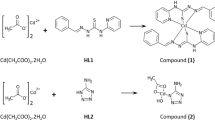Abstract
INDUCTION of hepatic metallothionein (a cadmium-binding protein) is considered to be a protective mechanism in mammals against the toxic cadmium ion. Pretreatment of rats with low doses of cadmium induces the synthesis of metallothionein and also protects against subsequent exposure to an otherwise lethal dose1. But the role of metallothionein in cadmium resistance is not clear2. Restriction of food intake in the rat increases the level of metallothionein3, but does not alter the LD50 of cadmium2. Also the synthesis of metallothionein seems to continue for a longer time than the protection against cadmium in both rats and mice1,2. Lucis, Shaikh and Embil4 found uptake of Cd in cultured human embryonic fibroblasts, HeLa cells and monkey kidney epithelial cells after 8 d of incubation with Cd. At that time the cells also contained a Cd-binding protein. The authors did not, however, describe growth of the cells in the presence of Cd or development of cell strains resistant to Cd. Webb and Daniel5 recently described the synthesis of a Cd-binding protein in cultures of cells derived from the cortex of the adult pig kidney.
This is a preview of subscription content, access via your institution
Access options
Subscribe to this journal
Receive 51 print issues and online access
$199.00 per year
only $3.90 per issue
Buy this article
- Purchase on Springer Link
- Instant access to full article PDF
Prices may be subject to local taxes which are calculated during checkout
Similar content being viewed by others
References
Yoshikawa, H., Ind. Hlth, 8, 184–191 (1970).
Webb, M., Ninth FEBS Meeting, 25-30 August, Budapest (1974).
Bremner, I., Davies, N. T., and Mills, C. F., Biochem. Soc. Trans., 1, no. 4 982–989 (1973).
Lucis, O. J., Shaikh, Z. A., and Embil, Jr, J. A., Experientia, 26, 1109–1110 (1970).
Webb, M., and Daniel, M., Chem. Biol. Interactions, 10, 269–276 (1975).
Rugstad, H. E., and Dybing, E., Eur.J. clin. Invest., 5, 133–137 (1975).
Bühler, R. H. O., and Kägi, J. H. R., FEBS Lett., 39, 229–234 (1974).
Nordberg, G. F., Nordberg, M., Piscator, M., and Vesterberg, O., Biochem. J., 126, 491–498 (1972).
Weser, U. et al., Eur. J. Biochem., 39, 127–140 (1973).
Kägi, J. H. R., and Vallee, B. L., J. biol. Chem., 236, 2435–2442 (1961).
Author information
Authors and Affiliations
Rights and permissions
About this article
Cite this article
RUGSTAD, H., NORSETH, T. Cadmium resistance and content of cadmium-binding protein in cultured human cells. Nature 257, 136–137 (1975). https://doi.org/10.1038/257136a0
Received:
Accepted:
Issue Date:
DOI: https://doi.org/10.1038/257136a0
This article is cited by
-
Melatonin increases tissue accumulation and toxicity of cadmium in the bank vole (Clethrionomys glareolus)
BioMetals (2005)
-
Role of cellular antioxidants in metal-induced damage
Cell Biology and Toxicology (1994)
-
Morphological effects of cadmium on proximal tubular cells in rats
Biological Trace Element Research (1991)
-
Immunohistochemical localization of metallothionein in plant tissues
Water, Air, and Soil Pollution (1991)
-
Modulation of metal toxicity by metallothionein
Biological Trace Element Research (1989)
Comments
By submitting a comment you agree to abide by our Terms and Community Guidelines. If you find something abusive or that does not comply with our terms or guidelines please flag it as inappropriate.



